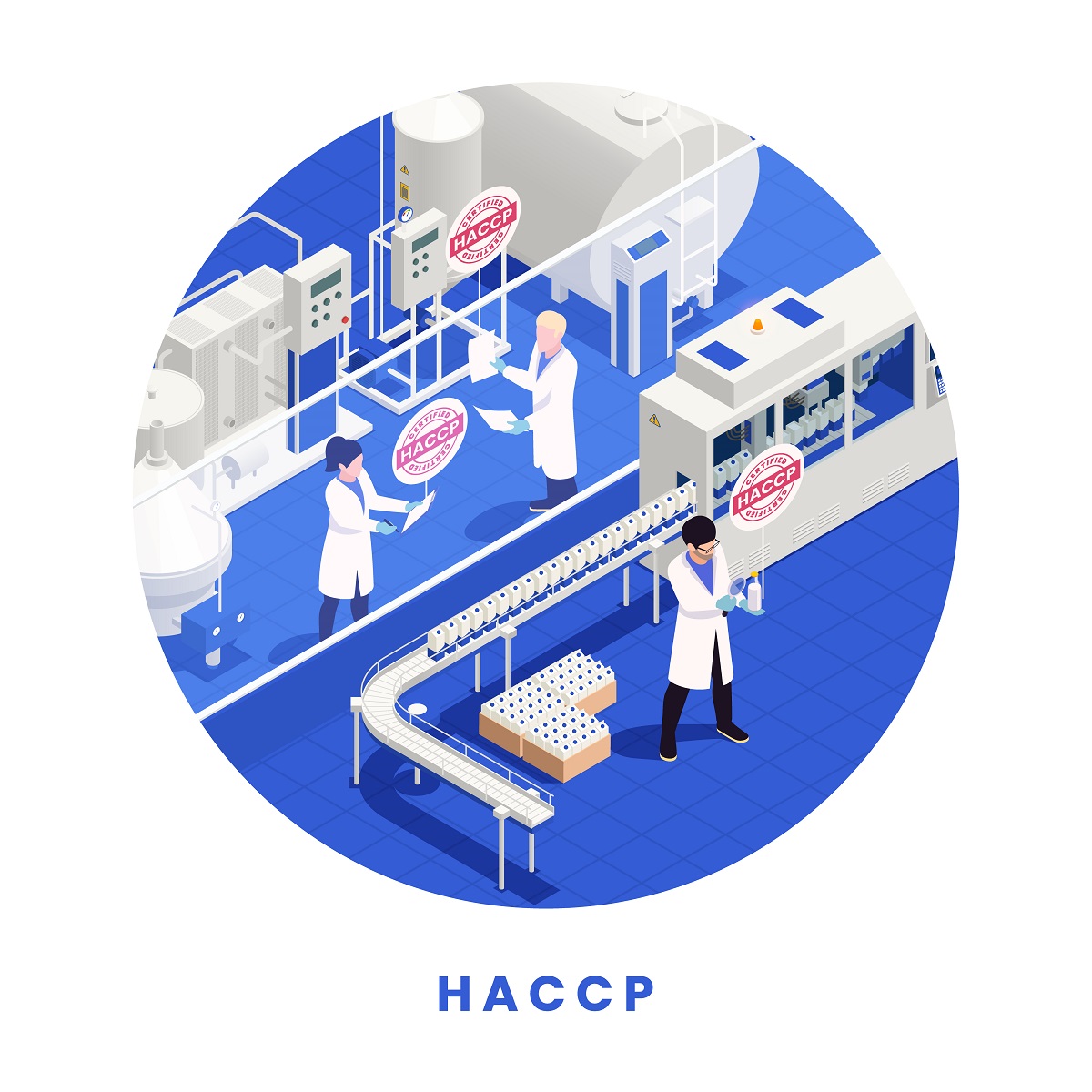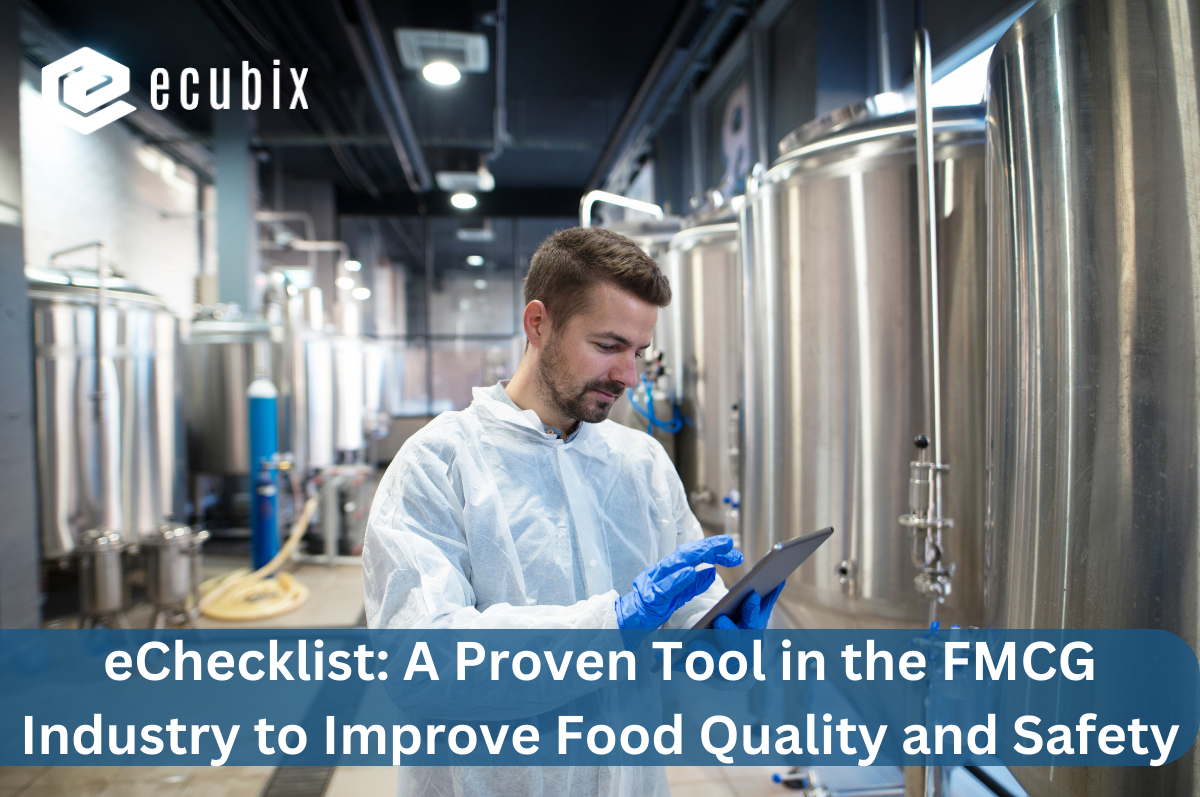What’s New in Digital Checklist for the FMCG Industry?
In the fast-paced and competitive FMCG industry, ensuring food quality and safety is paramount. Consumers demand and deserve products that are both delicious and safe to consume. Traditional paper-based checklists have long been used to maintain food safety standards, but they often prove cumbersome, time-consuming, and prone to errors. Fortunately, digital forms have emerged as a powerful tool for improving food quality and safety across the FMCG industry.
Specific Applications in the FMCG Industry
Digital checklists can be used across various stages of the FMCG supply chain, including:
- Production:
- Raw material inspection
- Equipment cleaning and sanitizing
- Process control monitoring
- Packaging and labeling inspection
- Finished product quality control
- Storage and Distribution:
- Temperature and humidity monitoring
- Warehouse sanitation and pest control
- Inventory management
- Transportation and logistics
- Retail:
- Food safety checks at receiving, storage, and display areas
- Temperature control monitoring
- Date coding and product rotation
- Food hygiene and sanitation practices
Gain further insights into the impact of eChecklist on the FMCG industry by referring to the case studies below:
Several FMCG companies have successfully implemented digital checklists to improve food quality and safety. For example, Nestle, a global leader in food and beverages, has replaced paper-based checklists with a digital platform across its entire supply chain. This initiative has significantly reduced errors, improved compliance with regulations, and enhanced overall food safety. Nestle implemented digital checklists for HACCP compliance, resulting in a 20% reduction in food safety incidents.

Another example is Danone, a multinational food company, which has implemented digital checklists in its dairy production facilities. This has resulted in improved milk quality, reduced processing time, and increased product shelf life.
PepsiCo used digital checklists to improve temperature control and reduce product spoilage, leading to significant cost savings.
Unilever employed digital forms for production processes, achieving a 15% increase in efficiency and productivity.
These are just a few examples of how digital checklists are revolutionizing the FMCG industry. As technology continues to evolve, we can expect to see even more benefits emerge in the years to come.
By below tips, FMCG companies can maximize the benefits of digital checklists and achieve their food safety and quality goals.
- Choose a user-friendly platform that is easy to learn and use.
- Customize checklists to reflect specific processes and requirements.
- Train employees on how to use the platform and complete checklists accurately.
- Conduct regular audits and reviews to ensure data integrity and compliance.
- Encourage feedback from employees to continuously improve the system.
Benefits of Digital Checklists to the FMCG Industry:
Digital Checklists offer a multitude of advantages over their paper-based counterparts. Here are some key benefits:
1. Improved Accuracy and Consistency:
Digital checklists eliminate the risk of human error associated with manual data entry. Checklists can be pre-populated with standardized questions and procedures, ensuring everyone follows the same steps every time. This leads to a more consistent and accurate implementation of food safety protocols.
2. Enhanced Efficiency and Time Savings:
Digital checklists streamline the food safety process, saving valuable time and resources. Tasks that used to take hours can now be completed in minutes, freeing up employees to focus on other important tasks.
3. Real-Time Data and Reporting:
Digital checklists provide instant access to real-time data and reports. This allows food safety managers to identify and address issues quickly, preventing costly recalls and outbreaks.
4. Improved Communication and Collaboration:
Digital checklists facilitate communication and collaboration between team members. Notes, comments, and corrective actions can be attached to checklists, ensuring everyone is on the same page and aware of potential risks.
5. Increased Regulatory Compliance:
Digital checklists help ensure compliance with relevant food safety regulations. Checklists can be easily updated to reflect the latest standards, and data can be readily accessed by auditors.
6. Reduced Paperwork and Environmental Impact:
Digital checklists eliminate the need for paper forms, reducing printing costs and environmental impact. This aligns with the growing trend of sustainable practices in the FMCG industry.
7. Enhanced Visibility and Transparency:
Digital checklists provide stakeholders with greater visibility into food safety practices. This builds trust and confidence in the brand, leading to increased customer loyalty.
8. Scalability and Adaptability:
Digital checklists can be easily scaled to accommodate the needs of growing businesses. They can also be adapted to different departments, processes, and locations.
Choosing the Right Digital Checklist Solution:
There are numerous digital checklist solutions available in the market, each with its own features and functionalities. When choosing a solution, it is important to consider the specific needs of your business, such as:
- Size and complexity of your operation
- Budget
- Regulatory requirements
- Integration with existing systems
It is also crucial to ensure that the chosen solution is user-friendly and easy to implement.

Modern digital checklists go beyond simply recording task completion. They are equipped with advanced features that empower proactive and preventative food safety management:
- Conditional logic: Automatically trigger follow-up actions based on specific responses, ensuring comprehensive problem identification and mitigation.
- Digital signatures: Provide audit trails and timestamped records for enhanced accountability and transparency.
- Integration with sensors and IoT devices: Automatically capture real-time data on temperature, humidity, and other critical parameters, eliminating manual data entry and increasing accuracy.
- AI-powered insights: Analyse historical data to identify patterns, predict potential risks, and recommend preventive measures.
- Offline functionality: Ensure uninterrupted operations even in areas with limited connectivity.
These features empower a proactive approach to food safety. Instead of reacting to issues after they occur, companies can predict and prevent them, minimizing risks and enhancing product quality.
Beyond Data Collection: Embedding a Culture of Safety
Digital forms are more than just technology; they are a catalyst for cultural change. By promoting standardization, transparency, and accountability, they foster a culture of food safety within the organization. Here’s how:
- Increased awareness: Easy access to checklists and readily available data empower employees to understand and actively participate in food safety protocols.
- Improved communication: Instantaneous updates and notifications ensure everyone is kept informed of potential risks and corrective actions.
- Collaborative problem-solving: Digital platforms facilitate communication between departments and levels, allowing for effective collaboration in addressing safety concerns.
- Empowered employees: Taking ownership of food safety tasks through digital checklists fosters a sense of responsibility and engagement amongst employees.
Implementing digital checklists translates to tangible benefits for FMCG companies:
- Reduced food safety incidents: Proactive identification and mitigation of risks lead to significant reductions in food-borne illness outbreaks and product recalls.
- Improved operational efficiency: Automated data collection and reporting streamline processes, saving time and resources.
- Enhanced brand reputation: Consistent delivery of safe and high-quality products builds trust and loyalty among consumers.
- Increased compliance: Digital checklists facilitate compliance with regulatory bodies and industry standards.
- Reduced costs: By minimizing waste and recalls, companies can save money on product disposal, rework, and litigation.
Investing in the Future of Food Safety
Digital checklists are not a one-time investment but rather a continuous journey of improvement. By continuously evaluating, adapting, and integrating new features, FMCG companies can stay ahead of the curve and ensure the highest standards of food safety for their customers.
Conclusion:
Digital checklists are a proven tool for improving food quality and safety in the FMCG industry. By leveraging the power of technology, companies can streamline processes, reduce errors, and ensure compliance with regulations. This not only protects consumers but also enhances brand reputation and drives business success.
Are you ready to improve your food safety and quality with digital checklists? Contact us today to get a free demo!
Most Asked FAQs:
How can a digital checklist enhance operational efficiency?
A digital checklist can enhance operational efficiency in several ways. Firstly, it eliminates the need for manual paperwork and reduces the chances of human error. Secondly, it can be accessed and updated in real-time, which means that changes can be made quickly and seamlessly. Thirdly, it can track progress and ensure that all tasks are completed on time. Finally, a digital checklist can be customized to suit specific needs and requirements, which means that it can be tailored to an organization’s unique needs.
What is the importance of a digital checklist in the FMCG industry?
A digital checklist can play a crucial role in the FMCG industry as it can help streamline various processes and ensure that all tasks are completed efficiently. By using a digital checklist, FMCG companies can keep track of inventory, monitor quality control, and ensure compliance with regulations and industry standards. It can also help reduce errors and minimize the risk of product recalls. Overall, a digital checklist can help FMCG companies improve their operations and maintain high levels of quality and efficiency.
How does FMCG marketing work?
FMCG companies often use a variety of marketing strategies to promote their products. Advertising through different channels like TV, radio, print, and online media is a common approach. Sales promotions, such as discounts, coupons, and free samples, are also widely used to attract customers. In addition, building strong relationships with customers, suppliers, and other stakeholders through public relations is another important strategy for FMCG companies.
What are the 3 major segments of the FMCG industry?
It is indeed divided into three major segments: Food & Beverages, Household & Personal Care, and Healthcare. Each of these segments has its unique characteristics and challenges.
Why Do Businesses Switch To Digital Checklists?
Businesses switch to digital checklists for a variety of reasons. Firstly, digital checklists are much more efficient and can save businesses a lot of time and money. They eliminate the need for paper-based checklists and can be completed much faster, reducing the time needed for data entry. Secondly, digital checklists are more accurate than paper-based ones. With digital checklists, businesses can ensure that checklists are completed correctly and that all necessary tasks are completed. Additionally, digital checklists can be easily customized to meet the specific needs of a business, making them more flexible than paper-based checklists. Finally, digital checklists provide businesses with a better way to track and analyze data. With digital checklists, businesses can easily collect and analyze data, allowing them to identify trends and areas for improvement.
